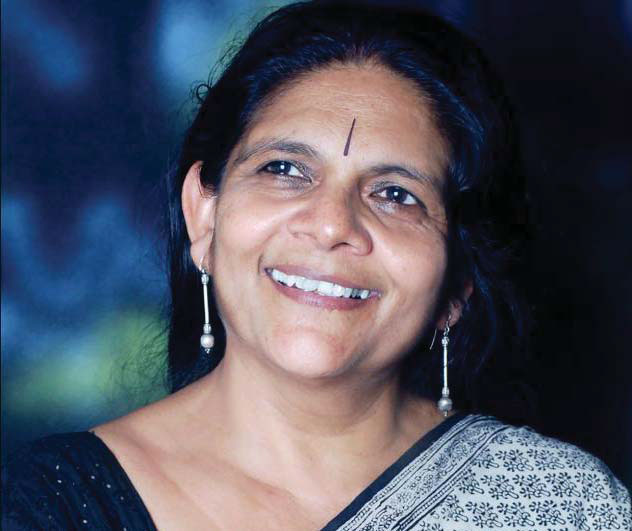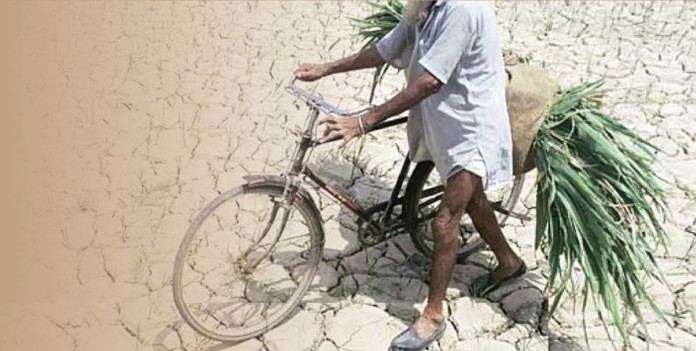Most droughts around the world, particularly in India, are not directly linked to deficient rainfall. Is it? Experts believe droughts are largely man-made – a result of bad water pricing policies, decreasing community engagement with local resources and a growing loss of belief in the idea of local solutions for local problems. Only encouraging proactive community involvement, smart technologies and smart pricing of water could prevent future droughts
By Benedict Paramanand
If you tell a politician or a farmer in North Karnataka or Vidharbha region of Maharashtra that deficient rainfall is NOT the real reason for drought conditions they face nearly every year, chances are that you’d be called insane and may even be beaten up. Yet, the hard truth in a country that has hundreds of rivers and thousands of lakes Don’t
Blame the Rain for Your Drought and streams, according to environmental economists is, gross mismanagement of its
water resources could be catastrophic in the near future. The list of complaints runs long but the most pertinent, as shown in the cases below, is a growing disconnect of local communities from a sense of ownership towards water bodies.
It is inconceivable how despite seven rivers that flow through 10 talukas of Belgaum district in Karnataka, the government has to rush water tankers during summers last few years. Bore wells and open wells are drying up quicker each year.
In 2014, four talukas of Mysore district were declared drought- hit when river Cauvery, one of south India’s largest, flows just a few kilometers away.
This problem is not that of India alone. Recent drought in California too shows that gross water resources mismanagement is not just an Indian challenge but a global problem requiring nearly similar solutions. A recent report by Ceres, a US-based NGO says: “Weak pricing signals, poor accounting and outdated rules are really at the heart of the problem (in California).
Drought may be the new normal for our state, so we need to start treating water as the valuable – and limited – resource that it is.”
Ceres wrote in its recent report that it’s tackling the California challenge head on. “We are utilizing our greatest strength, mobilizing our networks of companies and investors, in order to lead the way to a secure water future.”
From Distress to Verdant Fields
Simple interventions involving communities have had far greater impact on managing water issues better than grandiose plans. The nearly complete transformation of a severely drought stricken group of villages to lush green fields is not a wishful thinking. The case of Pulikoti village in Mann district in drought-stricken Maharashtra is very illuminating.
In 2013 drought wrecked havoc on these villages to the extent that it forced locals to distress-sell their cattle. “Guilt would surge over us watching the thirsty animals,” Mangal Sawant, a farmer in Pulkoti village told a DNA
newspaper reporter. “There was little water to drink for us. How could we feed the cows then?” However, by early 2015 the farmer’s five acre land grew corn worth Rs two lakhs. Now, she also owns three cows, two buffaloes and a
few sheep.

How did this ‘miracle’ turnaround happen? Thanks to Chetna Gala Sinha and Vijay Sinha, the founder couple of Mann Deshi Foundation. They located a thin stream running parallel to the dried up river. They consulted some hydrologists and geologists who suggested installing fi ve percolation tanks which would work as reservoirs.
A year later when rains came they collected every drop that fell along with the stream and stored in these reservoirs. By November 2014, the report said, enough water was collected in each of the reservoirs to provide solace to 15 of the 106 villages. It helped 4,000 farmers and their livestock. If not the irrigation needs, these tanks have permanently solved the drinking water problem in Mann.
The foundation also took an innovative step to ensure that benefits go to maximum number of rural folk. They organized a camp and invited farmers to bring their cattle to a common ground. Chetna got the villagers to group their animals (about 14,000) on a common ground. The camp lasted for one and a half years until they were able to tide over the distress. Sawant said farmers have started harvesting multiple crops in Mann region as well and
easy availability of fodder has enhanced milk production.
Chetna credits the swift revival of farming to Jaykumar Gore, the local Congress MLA for not letting the compli-cated government procedures become an impediment. The government chipped in with funding the camp since the foundation’s resources were limited. Fewer villagers are moving out in search of work and are going back to farming – a true indicator of the transformation.
Seeing the success of this initiative the state government plans to replicate it across the drought-affected areas in Maharashtra which have seen maximum number of suicide rates in recent years.
Chetna is also the founder of Mann Deshi Mahila Sahakari Bank. She is the winner Chetna, Founder of Mann Deshi Mahila Sahakari Bank of the 2013 India Social Entrepreneur of the Year (SEOY) awards organized by The Schwab Foundation for Social Entrepreneurship, a sister organization of the World Economic Forum.
If Mann can be transformed by the initiative of an NGO, by simply building percolation tanks and with a bit of help from a local politician, how difficult is it then to banish drought from villages in Belgaum and Mysore and perhaps
anywhere else?
Active Government in Gujarat Gujarat is not as heavily rain-fed as other Indian states, except Rajasthan. Yet, it has been able to increase its ground level water level in the last eight years as per the Central Ground Water Board data. This was possible because over 5.5 lakh water management structures like small dams, boribandhs and khet talavadis were built with the initiative of the state government and local bodies.
How a few residents got together and revived three big lakes in Bengaluru in the last three years, when the government’s Lake Development Authority failed, is another example of citizens stepping in to solve their problems and not depending on the government to solve it for them. This has galvanized several resident associations to revive lakes in Bengaluru. Instead of focusing on reviving hundreds of lakes, streams, tanks and ponds in and around Bengaluru to cater to the city’s water needs, state governments have been investing big money into drawing water from Cauvery river 140 kilometers away.
Key takeaways from the Mann, Gujarat and Bengaluru stories is this – communities can solve many of their local problems with local intervention and not wait for the government to solve it for them. The other is to think small to solve seemingly large problems.
That’s where the proposed project of linking major rivers in India comes into focus. If most of the local problems can be solved like in Mann, why does India need such mega investment with very heavy environmental cost? Or is the contractor mafia influencing India’s water policies?
Solutions for Better Water Management in India
• Install water meters for both farm and nonfarm consumers
• Install solar powered pumps for irrigation
• Price water in a way that it encourages efficient use and at the same time does not pinch poor farmers. Cross subsidization could work here just like in LPG.
• Giving back a sense of ownership of water bodies to local communities in rural and urban areas by involving citizens in water management boards
• Aggressive rain water harvesting, ground water recharging, restoration of natural wells
• Engaging students proactively for awareness building and changing the mindsets of parents












[…] sustainabilitynext.in […]
[…] Image Source: sustainabilitynext […]